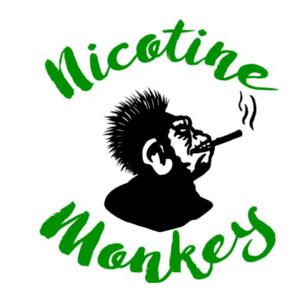Under the guise of protecting public health, the pro-vaping lobby gets into some curious twists and turns.
For example, there’s an official-looking 2017 paper, Reshaping American Tobacco Policy. It’s written by three people, one of whom, Clive Bates, oddly designates himself as ‘Director, Counterfactual’, evidently being unaware of what counterfactual means: pertaining to or expressing what has not happened or is not the case (Shorter Oxford English Dictionary).
The introduction, pompously entitled ‘Executive summary’, is an emotionally-loaded opinion piece that starts by referring to the death rate from cigarette smoking in the US and emphasises the obvious: ‘Smoking creates a massive health and economic burden.’
They then attempt to bolster their argument in favour of non-combustible nicotine products with statements such as these:
Where there is no combustion…the risks of nicotine use will inevitably be much lower…None of these products are perfectly safe – very little is. But they are very much safer.
They talk as if cigarettes are a permanent feature of the landscape. And note the cynical comment, ‘Very little is [perfectly safe]’. This is nonsense. Not smoking or vaping at all is guaranteed 100 per cent safe compared with smoking or using nicotine in some or other form.
Hyperbole abounds:
These radically reduced risk products create an opportunity for major health and economic gains through technology substitution…Seize the huge opportunity presented by low-risk nicotine products. Revolutionize tobacco and nicotine policy, reduce healthcare spending and improve health by exploiting the very large difference in risk to human health caused by combustible and smoke-free products. (Emphasis added.)
And note their condescending attitude:
US tobacco policy suffers from an abstinence-only ideology.
This is not something US tobacco policy suffers from. The problem is that US tobacco policy is not taken far enough – from promoting abstinence to legislating for the abolition of tobacco.
The real worry
Soon we come to their real worry: they might be regulated out of business!
New regulation coming into effect over the period to August 2019 will have the effect of taking 90 to 99 per cent of vaping products off the market for bureaucratic rather than safety reasons, and therefore dramatically limit options to switch from high-risk to low-risk products and obstruct innovation.
We should, however, give them credit for being even-handed and mentioning some possible disadvantages of vaping:
Nicotine is a mildly psychoactive drug that can be addictive, but addictiveness depends on how fast, in what form, and how much is delivered. However, nicotine itself is not particularly harmful.
Note how this is downplayed: mildly psychoactive, can be addictive, not particularly harmful. Even so, it’s an admission that nicotine is an addictive, harmful psychoactive drug. Nah, take back the credit.
Self-contradiction and hyperbole
Then they get into self-contradiction and more hyperbole:
Nicotine is not addictive in the same way as opioids even if it does meet almost all clinical definitions of an addictive substance…The most damaging warning claims smokeless tobacco is ‘not a safe alternative to cigarettes’. Though technically true, this is profoundly misleading. It has been strongly criticized by experts for withholding the most crucial differential risk information.
Note most damaging, profoundly misleading, strongly criticised, the most crucial, etc.
They want labels on non-combustible tobacco products to show messages such as, ‘This product presents substantially lower risks to health than cigarettes.’ Of course they do, but consider this:
The fashionable way to poison yourself with nicotine
The Juul e-cigarette gadget looks like a USB stick. But instead of plugging it into your computer you stick it in your mouth – and suck. One Juul ‘pod’ contains 25mg of nicotine. This is the equivalent of one pack of cigarettes. So nicotine addicts can feed their addiction by inhaling, over the course of a day, 25mg of nicotine. Why would anyone in their right mind want to do that?
Now you see it. Smokers, because they apparently believe it would be intolerable not to take this amount (more of less) of nicotine into their bodies every day, are being enticed to do it in a way that is claimed to be safer than smoking!
Why not stop using nicotine in any shape or form?
It might be easier than you think.
Text © Gabriel Symonds


Leave A Comment